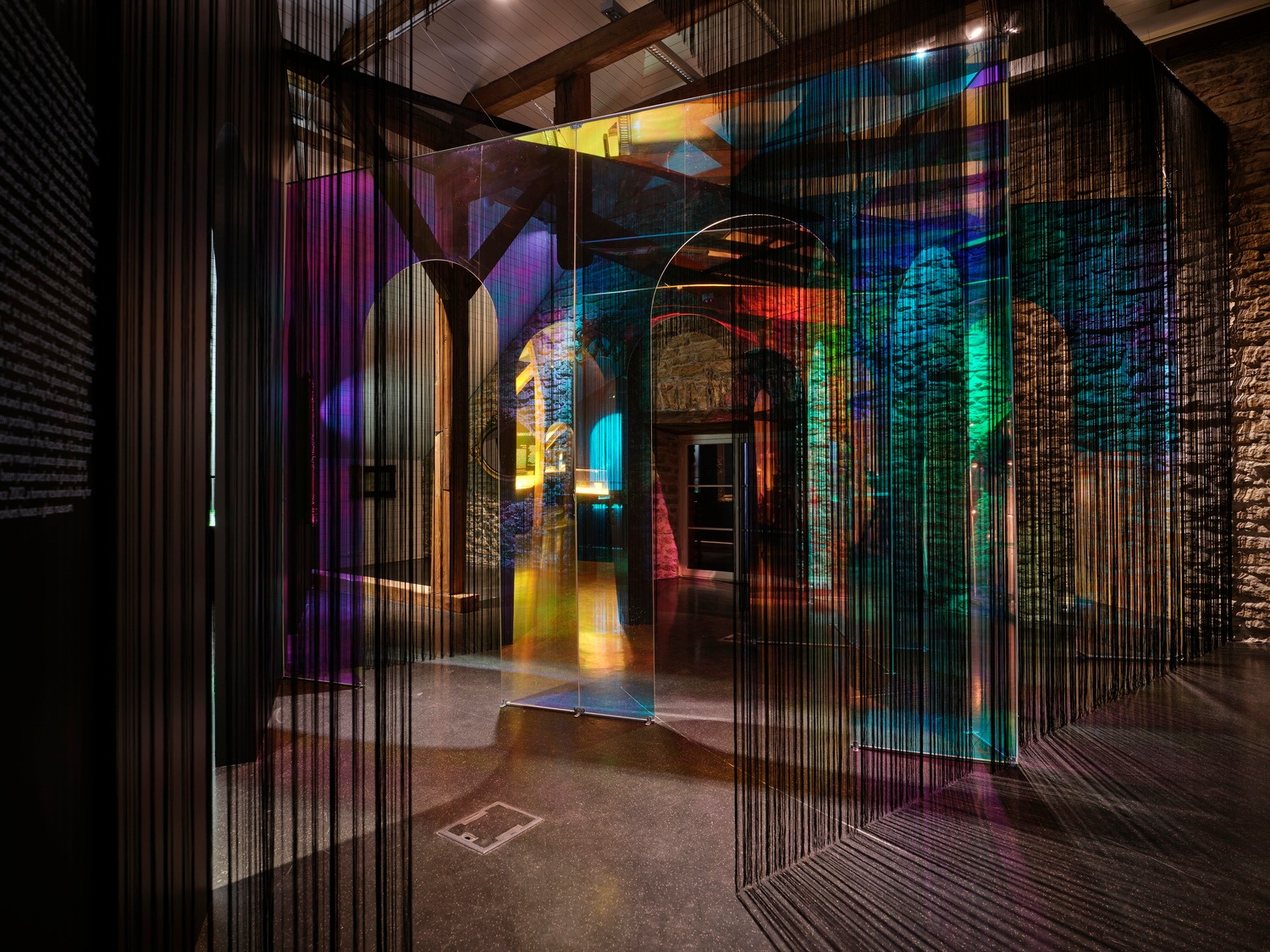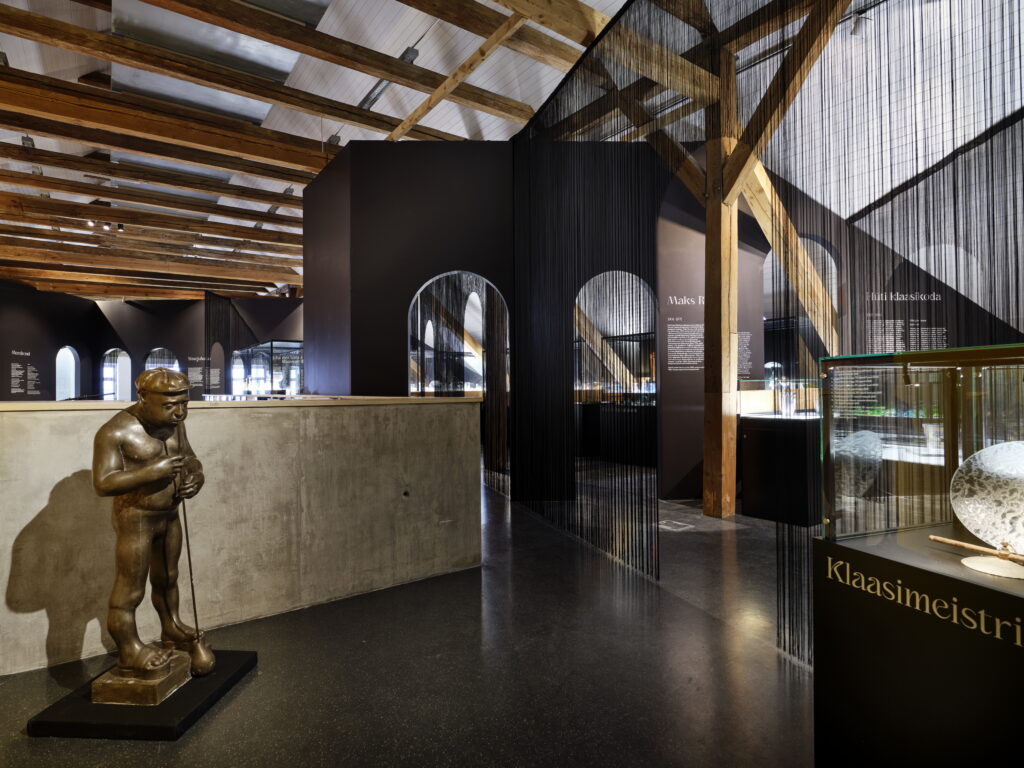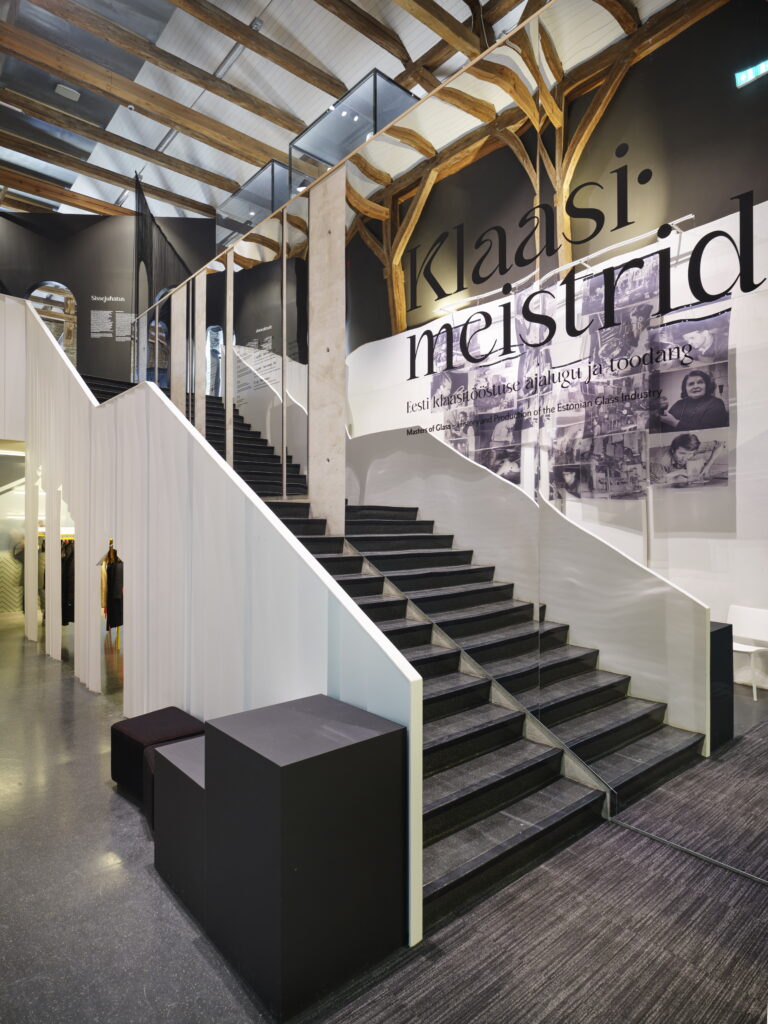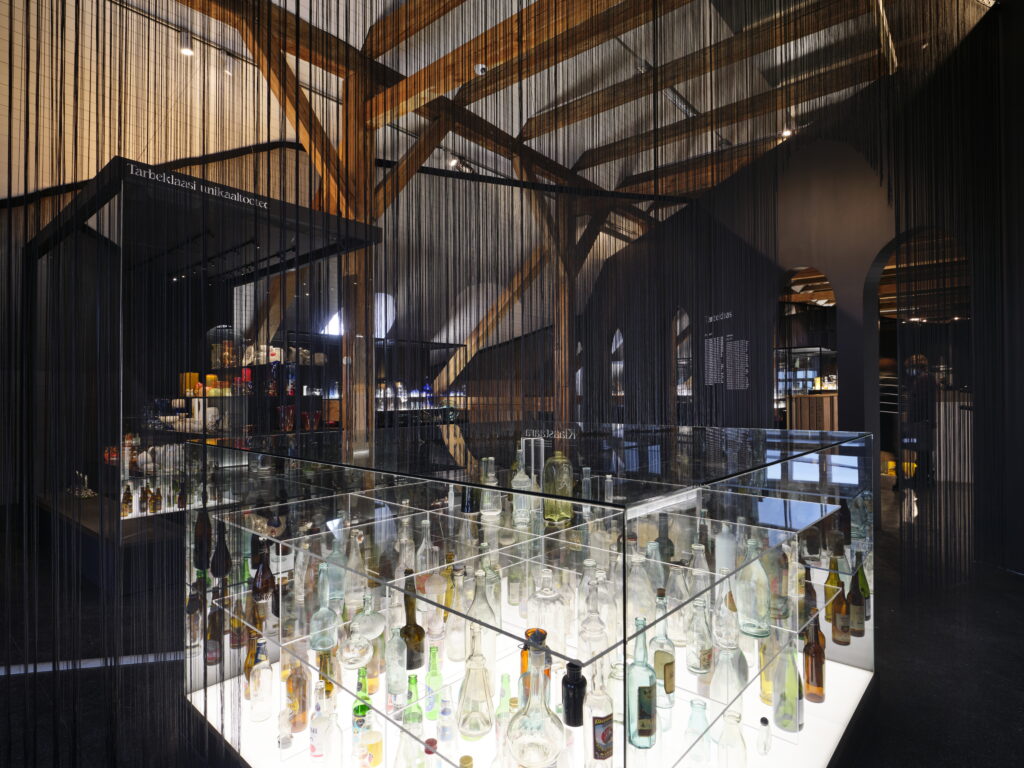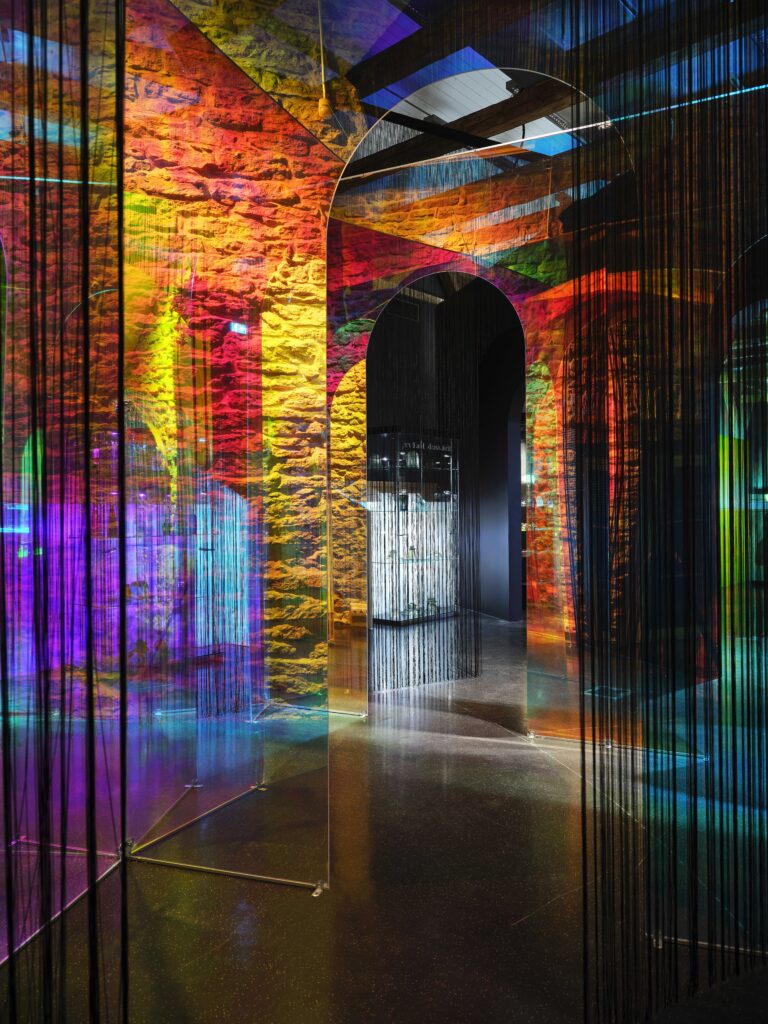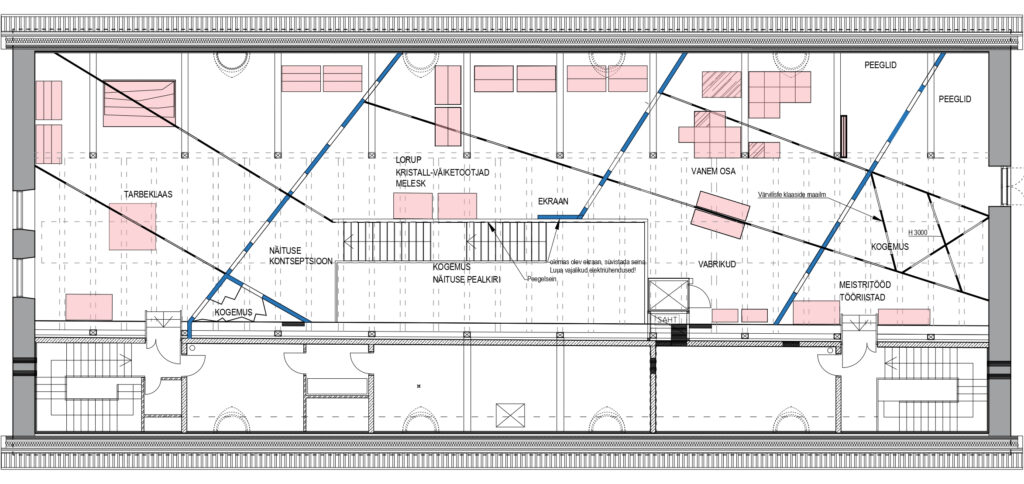Putting on an exhibition of the history of Estonian glass production was quite a challenging undertaking as we had to exhibit around a thousand very different objects starting from archaeological fragments and discoloured mirrors to luxurious crystal dishes and 21st-century containers. The task was further complicated by the rustic exposition hall with its narrow floor plan and massive beams that at first sight couldn’t possibly support the delicate and translucent character of glass. We eventually decided to go along with the designers’ idea to manipulate with the features of glass also in the exhibition design. So, the staircase dimensions were enhanced with a mirror wall, additional space was created with a coloured glass maze and a cracked glass tunnel, and the showcases were placed directly between the crude timber structures to emphasise the fragility of the exhibits. The entire building was turned into a new exciting environment where the visitors are shown not only the history of glass but also the contemporary uses of the extraordinary material.
Anne Ruussaar, curator of the exhibition
The exhibition provides an overview of the history of Estonian glass industry and the most important producers of glass. Visitors can learn about glass in all its beauty as the exhibition leads us from the earliest glass objects found in Estonia to the contemporary glass production.
The exhibition design was inspired by the features of glass — it is reflective, transparent, it can be colourful and simultaneously fragile and strong. In Maarjamäe Stable Building of the History Museum, we created a new world with diagonal walls in line with the aesthetics of a crystal palace. The dark drywall walls alternate with string curtains creating a new fascinating environment that allows to walk around the exhibition through arched doorways while already sensing the next part of the exposition between the curtains. With the exhibition design, we wished to address the visitors and offer something more than mere showcased objects accompanied by elegant graphics.
The best and rarest findings of Estonian glass art are placed in simple showcases where they acquire a particular lustre in the generally gloomy environment and catch the visitor’s eye. The extraordinary beauty of stained glass is particularly enhanced by the lit showcase shelves.
There are also interesting interactive areas allowing the visitors to ponder on the value and features of glass. Mirrors, adventures in the world of stained glass, shards of glass — glass is, after all, fragile. In addition to the perception of glass as a material, the interactive areas also allow the visitors to capture their likeness within the beauty of glass.
The typography and graphic design of the exhibition are similarly inspired by the properties of glass. The flowy graphic design scaffolds and complements the entire concept of the exhibition.































































































































































































